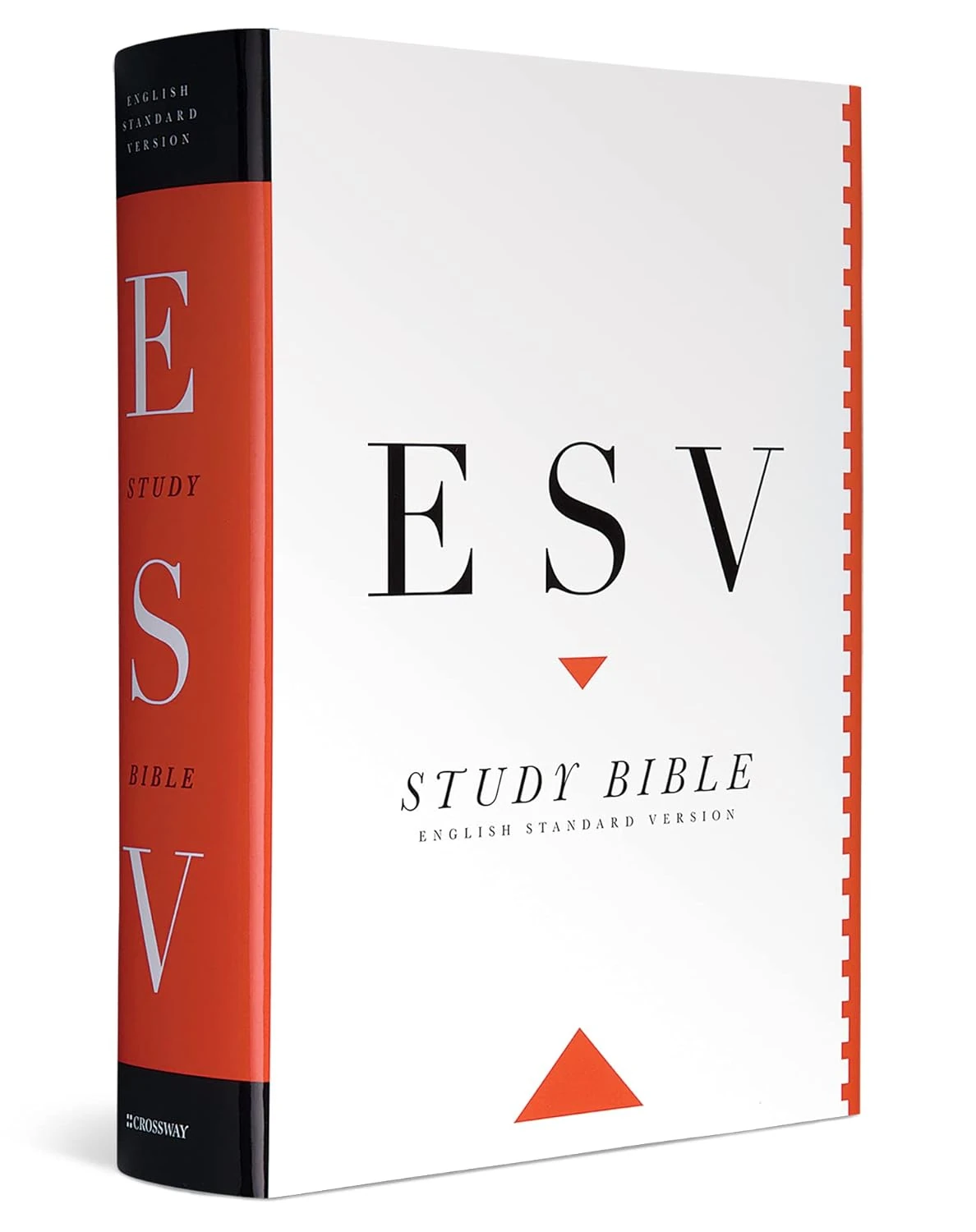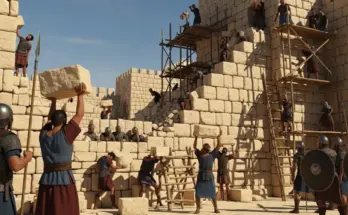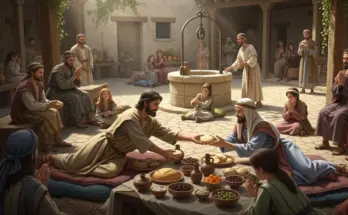The Gospel of Matthew stands as a powerful bridge between the Old and New Testaments. As we open its pages, we step into a story deeply rooted in Jewish history yet written for all who seek the truth. Matthew invites us to see Jesus not just as a teacher or miracle worker, but as the long-awaited Messiah, Israel’s true King.
From the very first chapter, we notice a strong connection to the Old Testament. Over and over again, Matthew points out how Jesus fulfills prophecy. Because of this, his gospel speaks clearly to Jewish readers. At the same time, his message reaches beyond Israel to the whole world. The gospel ends with Jesus sending His followers to make disciples of all nations.
Discover simple, powerful Bible study habits. Get How to Study the Bible for Yourself today!
In this outline, we’ll walk through the structure and message of Matthew’s Gospel. We’ll highlight its key themes, major events, and lasting impact. As we explore the life and ministry of Jesus, we’ll also see how His kingdom calls us to live differently.
Whether we’re new to Bible study or long-time students of Scripture, the Gospel of Matthew helps us understand God’s plan and points us to our King.
Writer of the Gospel of Matthew
The Gospel of Matthew is traditionally linked to Matthew, also known as Levi. He was one of Jesus’ twelve apostles and worked as a tax collector. Because of his profession, Matthew was likely educated and skilled in recordkeeping. These traits would have helped him organize teachings, parables, and genealogies with care.
Even though the gospel itself doesn’t name its author, early Christian leaders such as Papias and Irenaeus believed Matthew wrote it. They passed down this tradition through the generations. While we can’t prove it beyond doubt, the internal details and structure fit well with what we know about him.
Matthew’s background adds something special to his writing. He left behind a life of wealth and social rejection to follow Jesus. So, as we read the Gospel of Matthew, we’re hearing from someone who knew Jesus personally and chose to record His life with great purpose.
Date Written
Scholars generally date the Gospel of Matthew between AD 60 and 70. This places it within a generation of Jesus’ life and ministry. Many believe it was written before the destruction of the Jerusalem temple in AD 70. That’s because Matthew 24, where Jesus speaks about the temple’s fall, sounds like a future event—not one already fulfilled.
While some suggest a later date, the earlier timing fits well with the apostolic era. It also helps explain the gospel’s Jewish tone and concern with fulfilled prophecy. Since Christianity was still emerging from its Jewish roots, Matthew’s focus on Old Testament connections makes perfect sense.

ESV Study Bible Hardcover
The ESV Study Bible was designed to help you understand the Bible in a deeper way. Created by a diverse team of 95 leading Bible scholars and teachers the ESV Study Bible features a wide array of study tools, including extensive study notes, 200 full-color maps, 40 full-color illustrations, charts, timelines, articles, and introductions, making it a valuable resource for serious readers, students, and teachers of God’s Word.
Get Yours on AmazonSome readers take a partial preterist view of prophecy. That means they believe many of Jesus’ warnings in Matthew 24 were fulfilled in the first century, especially in AD 70. This view supports an earlier date and helps us understand the urgency in Matthew’s message.
Overall, the Gospel of Matthew stands close to the events it describes. That’s why it feels so fresh and immediate. As we study it, we’re not far removed from the time Jesus walked the earth.
To Whom Written
The Gospel of Matthew was written mainly for a Jewish-Christian audience. We can see this in many unique details. For example, Matthew often explains how Jesus fulfills Old Testament prophecies. He also traces Jesus’ family line all the way back to Abraham, the father of the Jewish people.
In addition, Matthew includes Jewish customs and Aramaic phrases. However, he sometimes explains these customs, which shows he expected some readers might not fully understand them. That tells us he likely wrote for Jewish believers, but also welcomed others into the conversation.
Even though the focus is Jewish, the message is for everyone. Jesus is presented as the Messiah of Israel, but also the Savior of the world. That becomes clear when Matthew ends with the command to make disciples of all nations.
So, the Gospel of Matthew reaches both Jew and Gentile, calling all of us to follow the true King.
Purpose of the Gospel of Matthew
The purpose of the Gospel of Matthew is clear from beginning to end. Matthew wants us to see Jesus as the promised Messiah and King. He connects Jesus to the Hebrew Scriptures, showing how God’s promises to Israel are fulfilled in Him.
From the genealogy to the final command, Matthew builds a strong case. He points out fulfilled prophecies, highlights miracles, and records powerful teachings. All of this helps us understand who Jesus Christ is and why we should follow Him.
But Matthew doesn’t stop with history. He also shows us what it means to live under Jesus’ rule. That’s why we see so much about the kingdom of heaven. Jesus isn’t just a figure from the past—He’s the King who reigns now.
As we read, we’re invited to respond. Will we hear His words and obey? The Gospel of Matthew challenges us to do both, and to follow Jesus as Lord and Savior.
Historical Context of the Gospel of Matthew
The Gospel of Matthew was written during a time of great change and rising tension. The early church was still young, and many believers were Jewish. However, not all Jews accepted Jesus as the Messiah. As a result, conflict began to grow between Jewish communities and followers of Jesus.
At the same time, the Roman Empire ruled with a heavy hand. Christians faced increasing pressure from both religious and political leaders. Because of this, Matthew’s message of faithful obedience and courage stands out.
Matthew likely wrote his gospel just before or shortly after the destruction of the temple in AD 70. That event shook the Jewish world. Without the temple, many traditions and practices had to change. But even in that moment of loss, Matthew pointed to Jesus as the true fulfillment of the Law and the Prophets.
The gospel doesn’t just look back. It prepares us for life in a world that may reject our faith. Again and again, Jesus calls His followers to trust, endure, and obey—even when it’s hard.
So, the Gospel of Matthew speaks with clarity and urgency. It was written in difficult times, but it offers hope to all who will listen.
Key Themes in the Gospel of Matthew
One of the most important themes in the Gospel of Matthew is that Jesus is the promised Messiah. Matthew often says, “This was to fulfill…” and then quotes Old Testament prophecies. These verses connect Jesus to the Law, the Prophets, and the Writings. Because of this, we see how God’s plan unfolds across generations. Matthew wants us to be sure—Jesus is the one Israel was waiting for.
The Kingdom of Heaven
Another major theme is the kingdom of heaven, a phrase found over 30 times in this gospel. It’s unique to Matthew. He shows us that God’s rule is breaking into the world through Jesus. This kingdom isn’t about borders or politics. Instead, it’s about hearts, lives, and communities changed by God’s power.
Discipleship and Obedience
Matthew doesn’t just tell stories; he calls us to action. Over and over, Jesus says obedience matters. In Matthew 7:21, He warns that hearing isn’t enough—we must do the will of the Father. This theme invites us to live out our faith in real ways.
Jesus’ Authority
Throughout the Gospel of Matthew, Jesus speaks and acts with authority. We see this in His teaching, like the Sermon on the Mount. We also see it in His miracles, as He calms storms and casts out demons. Even sin and death obey Him.
Conflict with Religious Leaders
Jesus often clashes with the Pharisees and scribes. He exposes their hypocrisy and calls for deeper righteousness. This conflict highlights the difference between outward religion and true heart devotion.
Mission to All Nations
Although Matthew focuses on Israel, he ends with a global call. In Matthew 28:19–20, Jesus sends His followers to make disciples of all nations. The gospel begins in Jerusalem—but it’s meant for the world.
Major Events/Stories in the Gospel of Matthew
The Gospel of Matthew begins with a genealogy that traces Jesus back to Abraham and David. This shows us that Jesus comes from royal and covenant roots. Then, Matthew tells of His miraculous birth. Jesus is born of a virgin, just as the prophet Isaiah said. Right from the start, we see prophecy fulfilled.
Baptism and Temptation (Ch. 3–4)
Jesus is baptized by John the Baptist in the Jordan River. As He rises from the water, the Spirit descends, and the Father speaks. Immediately after, the Spirit leads Jesus into the wilderness. There, He resists the devil’s temptations by relying on Scripture. These events prepare Him for ministry.
Sermon on the Mount (Ch. 5–7)
Next, Jesus goes up a mountain and teaches about the heart of God’s kingdom. He covers prayer, anger, forgiveness, and more. The message is clear: kingdom living requires a changed heart, not just outward obedience. As a result, we see how Jesus’ teaching calls us higher.
Healings and Miracles (Ch. 8–9)
Jesus heals the sick, casts out demons, calms a storm, and raises the dead. His power proves His authority. These miracles also show His deep compassion. In every act, we see God’s kingdom breaking through.
Sending the Twelve (Ch. 10)
Jesus then sends His twelve disciples out to preach, heal, and cast out demons. He warns them of persecution but promises help. Even in hardship, the mission must go on.
Parables of the Kingdom (Ch. 13)
Jesus tells parables about seeds, weeds, and treasure. These stories help us understand how the kingdom grows—quietly, steadily, and powerfully. Though small at first, it will one day fill the earth.
Confession and Transfiguration (Ch. 16–17)
Peter boldly confesses that Jesus is the Christ. Soon after, Jesus is transfigured on a mountain. His glory shines, and God again confirms His Son. This moment strengthens the disciples before the road to the cross.
Teachings on the Church (Ch. 18)
Jesus teaches how His followers should live together. He speaks about humility, forgiveness, and resolving conflict. The church must reflect the heart of its King.
Final Week in Jerusalem (Ch. 21–25)
Jesus enters Jerusalem as a king on a donkey. He cleanses the temple and confronts religious leaders. Then He teaches about the end of the age and His return. These chapters are full of urgency and warning.
Crucifixion and Resurrection (Ch. 26–28)
In the final chapters, Jesus is betrayed, arrested, and crucified. But death cannot hold Him. He rises in power and meets His disciples. Before ascending, He sends them to make disciples of all nations.
The Gospel of Matthew gives us a sweeping, powerful view of Jesus’ life, death, and victory.
Theological Contributions in the Gospel of Matthew
In the Gospel of Matthew, Jesus is shown as a new and greater Moses. Just as Moses gave the Law on Mount Sinai, Jesus delivers the Sermon on the Mount. This new teaching isn’t about external rules. Instead, it goes deeper—straight to the heart. Because of this, we learn that kingdom living requires true inner change.
Fulfillment of Scripture
Matthew quotes or alludes to the Old Testament more than 60 times. Again and again, he says, “This was to fulfill…” These moments remind us that Jesus didn’t come out of nowhere. He came as the fulfillment of God’s promises. So, Matthew connects the dots between Israel’s history and Christ’s mission.
The Kingdom Ethic
Jesus raises the standard for righteous living. Not only must we avoid sin, but we must also pursue purity in thought and motive. As a result, our faith becomes more than belief—it shapes how we live every day.
Jesus as Emmanuel (“God with us”)
Matthew begins and ends with this beautiful truth: God is with us. From the virgin birth (Matthew 1:23) to the Great Commission (Matthew 28:20), Jesus remains present with His people.
Church and Community
Only the Gospel of Matthew uses the word church (Greek: ekklēsia). Jesus speaks about church discipline, forgiveness, and unity. Because of this, we gain helpful instruction for life together as believers.
Christ’s Authority
Matthew emphasizes that Jesus has authority over all things. He heals, forgives sins, calms storms, and teaches with unmatched wisdom. Most importantly, He commands our loyalty.
In short, the Gospel of Matthew offers a rich, layered understanding of who Jesus is and what He calls us to become.
Special Consideration in the Gospel of Matthew
The Gospel of Matthew includes some unique features we don’t want to miss. One special detail is its structure. Matthew organizes Jesus’ teaching into five major blocks—chapters 5–7, 10, 13, 18, and 23–25. Each section ends with the phrase, “When Jesus had finished saying these things…” This repeated pattern likely reflects the five books of Moses. Because of this, Matthew presents Jesus as a new lawgiver and teacher for God’s people.
There’s more. Matthew gives extra attention to Peter, highlighting his role among the disciples. While Peter appears in all the gospels, Matthew includes moments that show his growth and leadership. This may be why Jesus’ promise to build His church on Peter’s confession appears here and not elsewhere.
We also find the story of the Magi—Gentile wise men who come to worship the newborn King. This moment points to something bigger. Although the gospel has a strong Jewish focus, it still opens the door to the nations.
Finally, Matthew emphasizes judgment more than the other gospel writers. Jesus speaks clearly about accountability—for individuals, for Israel, and for the world. Yet even in these warnings, we find grace and invitation.
In all these ways, the Gospel of Matthew stands out as both deeply Jewish and beautifully universal.
Final Thoughts on The Gospel of Matthew
The Gospel of Matthew gives us a rich, powerful picture of Jesus as the promised King and Savior of the world. From His birth to His resurrection, Matthew shows how Jesus fulfills the Law, the Prophets, and God’s eternal plan.
Because of this, we’re invited to trust Him—not just as a teacher, but as Lord. Jesus calls us into a kingdom shaped by mercy, truth, and obedience. He challenges us to follow Him fully, even when it’s hard.
Matthew helps us see the big picture. He connects the old with the new, prophecy with fulfillment, and law with grace. Through his words, we discover the heart of God revealed in Jesus Christ.
But our journey doesn’t stop here. As we grow in faith, we should keep digging into Scripture. There’s so much more to explore.
We encourage you to keep studying with us. Check out more Bible Outlines and dive into other books—like the book of Genesis, where we find the beginning of everything.
Together, let’s keep learning, growing, and following the King.
Discover More in Bible Study Toolbox
Looking for more? Explore additional New Testament Bible Outlines to see how God’s Word fits together chapter by chapter. Each outline is part of the resources available at Bible Study Toolbox, where we provide studies, guides, and tools to help believers grow in the Word with clarity and confidence. Contact us with any questions or concerns.
Frequently Asked Questions on the Gospel of Matthew
1. Why did Matthew write his Gospel? Matthew wrote to show that Jesus is the promised Messiah of the Old Testament. His Gospel helps both Jews and Gentiles see how Jesus fulfills God’s plan and brings the kingdom of heaven near.
2. How is Matthew’s Gospel different from the others? Matthew includes more Old Testament references than any other Gospel. He also organizes Jesus’ teachings into five major sections, much like the books of Moses.
3. Who was Matthew, and what was his background? Matthew was one of Jesus’ twelve apostles. He had been a tax collector before following Jesus, which means he likely had strong skills in recordkeeping and organization.
4. What does “kingdom of heaven” mean in Matthew? This phrase refers to God’s rule through Jesus the King. It’s not just about heaven later—it’s about God’s reign in our lives right now.
5. Where should I go next after studying Matthew? A great next step is the Gospel of Luke for more of Jesus’ life, or the book of Lamentations for learning how to trust God through suffering and sorrow.




